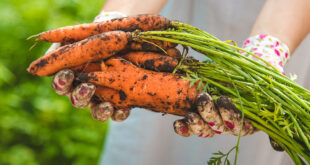If you’ve never been a seed saver, lockdowns and supply-chain shortages may have changed your mind. It’s been tough finding garden seedlings during these difficult times, and even tougher when your favourite varieties of seed have been unavailable. Play it safe by having your own secret stash of garden seeds safely stored in your cupboard, ready to take out as soon as you want to sow! Simply follow the basics below to get started on seed saving this summer.
Check the label!
Some seeds won’t grow plants just like their parent. This is because they may be a ‘hybrid’ (a specially bred plant). Check the original seed packet to see if the seeds you have sown are a hybrid variety, and if so, avoid saving seed from these plants.
Social climbers
Beans are well known for cross pollinating, so if you (or your neighbour) have grown two or more varieties between you, some of the seed produced on your plants may well be a cross between them. But that’s OK – you’ll have a new variety to grow next season – and it will be all your own, so you can even name it!
Move it!
Seed can take a long time (up to several months) to form and ripen, especially on root vegetables such as carrots and parsnips. During this time the seeding plant takes up space in a garden you may want to use the space for another planting. The answer is to carefully dig the entire seeding plant (root and all) out of the garden, and heel it in a vacant spot where it won’t be in the way while you wait for the seed to develop.
Ripe and ready
Seed is ready to collect when the seed head on the plant has changed from a fresh flower into tight fresh seeds or seed pods that then slowly turn brown and crisp in the sun. Once it reaches this stage, check on it daily so you collect it before it drops to the ground.
Harvest
Collect seed on a dry, windless afternoon when any moisture has dried off the plant. Use a pair of secateurs to snip off the seed head or pods (do so gently so you don’t disturb the seeds and they fall to the ground before you have a chance to collect them). Take the seed head or pods inside, out of any wind.
Crumble
Lay the seed heads or pods on a pale dish towel or pillow case so you can spot them easily as they fall. Open pods to remove seeds, and crumble seed heads between your fingers to prise off the seeds inside. Don’t be concerned if quite a lot of dross falls off. Blow on it gently and it will usually separate from the heavier seed which is left on your collection cloth.
Clean
Large seeds, such as beans and peas, don’t require cleaning. Smaller seeds, however, may still be surrounded by a sheath of plant material. To remove this, gather up the seed and place it in a fine wire sieve. Use your fingers to rub the seed against the mesh of the sieve, and in most cases, the dry sheath material will fall through, leaving behind the clean seed.
Prep and pack
Seeds store best if thoroughly dry. To get your seed (large or small) as dry as possible, place it in a clean, flat dish on a sunny window ledge for 2-3 days, stirring daily so all seed is exposed to the sun. Once thoroughly dry, use a funnel to help you pack the seed into clean, dry jars. Add a sachet of food-grade desiccant to the jar to absorb any moisture still present. Label the jar with name and date of the seed.
Seed saving is so satisfying, and it’s your insurance against lack of supply. You will gather far more seed than you need, so share it with friends!










Join the Discussion
Type out your comment here:
You must be logged in to post a comment.